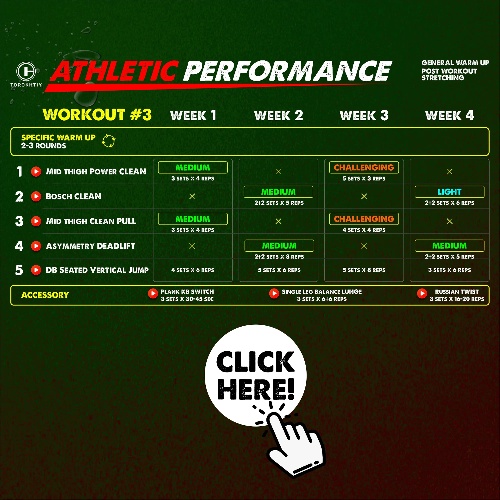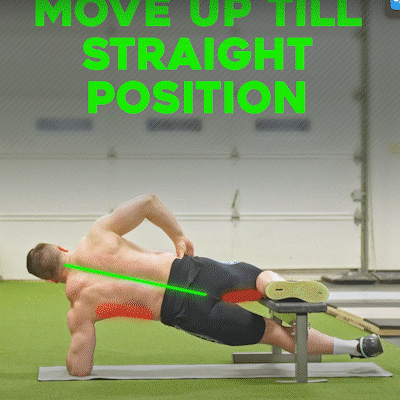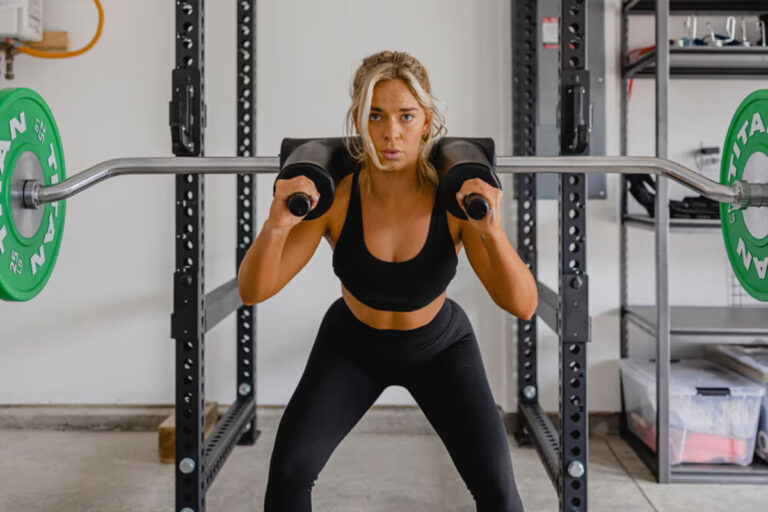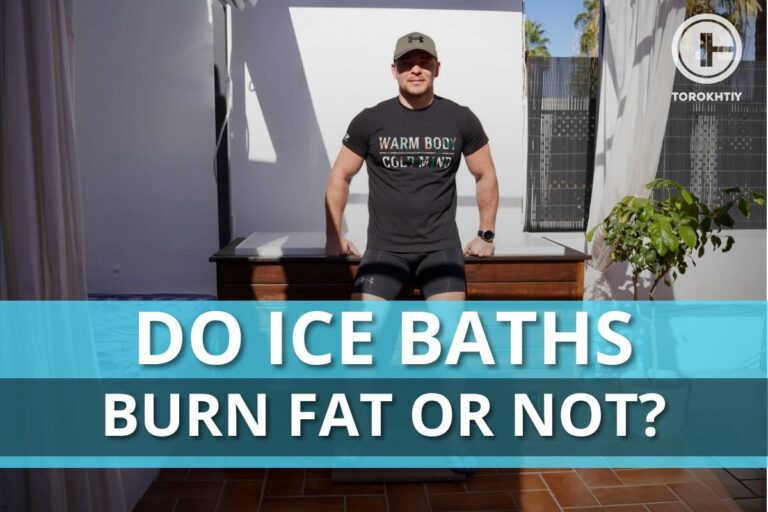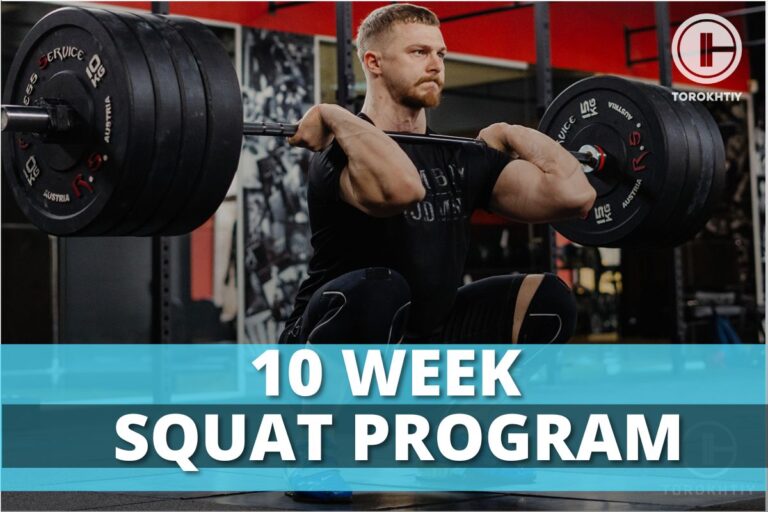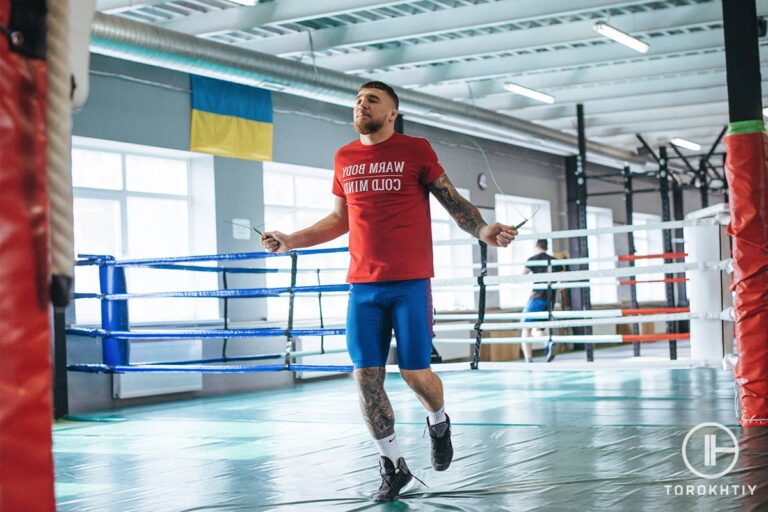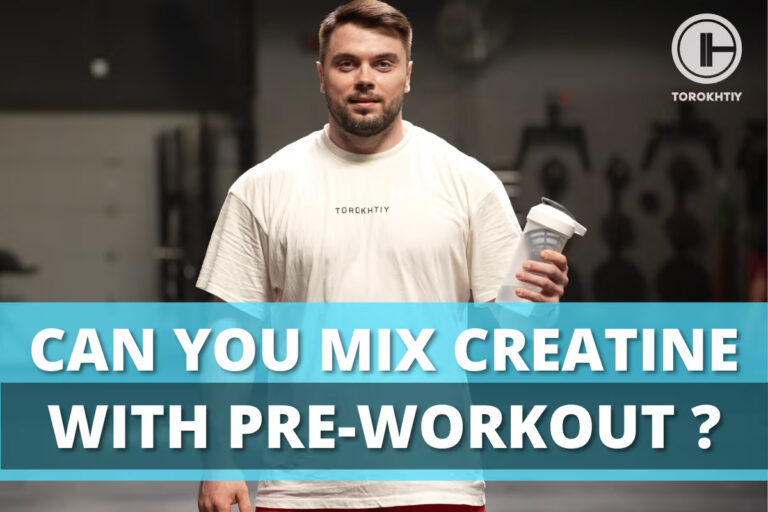Strength Training for Swimmers (Detailed Program)
Reviewed by: Oleksiy Torokhtiy (21 years of Oly Lifting experience)
If you’re a swimmer looking to improve your performance in the pool, it’s time to add weightlifting to your training routine. In this article, we’ll explore the benefits of weight workouts for swimmers, as well as the best strength exercises for swimmers.
We’ll also discuss common mistakes swimmers make when weightlifting and how to avoid them. So, whether you’re a seasoned pro or just starting out, this article is a must-read if you want to take your performance to the next level
Strength training is a type of exercise that involves using weights or resistance to build muscle and improve athletic performance. Swimmers can benefit greatly from incorporating strength training into their routine, as it helps increase power, speed, and technique in the water while reducing the risk of injury.

What is Strength Training for Swimming?
Strength training should be a vital component of any swimmer’s training regimen as it helps to build muscle and improve athletic performance in the water. While swimming alone is a great full-body workout, a specific weightlifting program for swimmers allows you to target particular muscles and movements that are crucial when in the water.
Though swimming is a full-body workout, the key muscles recruited when swimming are as follows:
Upper Body
Latissimus Dorsi
The latissimus dorsi, commonly known as the lats, is the largest muscle in the back. It is responsible for a wide range of movements, including pulling, reaching, and lifting. In swimming, the lats are used to generate power during the pull phase of the stroke.
The lats help to pull the arms back and down in a circular motion, creating the propulsion needed to move forward through the water.
Pectoralis Major
The pectoralis major, or pecs, is the large muscle in the chest. It is responsible for movements such as pushing, lifting, and rotating the arms. In swimming, the pecs are used during the recovery phase of the stroke.
This is when the arms are brought forward and out of the water to prepare for the next pull phase. The pecs help to lift the arms out of the water and into position for the next stroke.
Deltoids
The deltoids, or delts, are the muscles in the shoulder. They are responsible for lifting and rotating the arms. In swimming, the delts are used during both the pull and recovery phases of the stroke.
They help to generate power during the pull phase by lifting the arms up and out of the water. During the recovery phase, they help to control the movement of the arms and position them correctly for the next stroke.
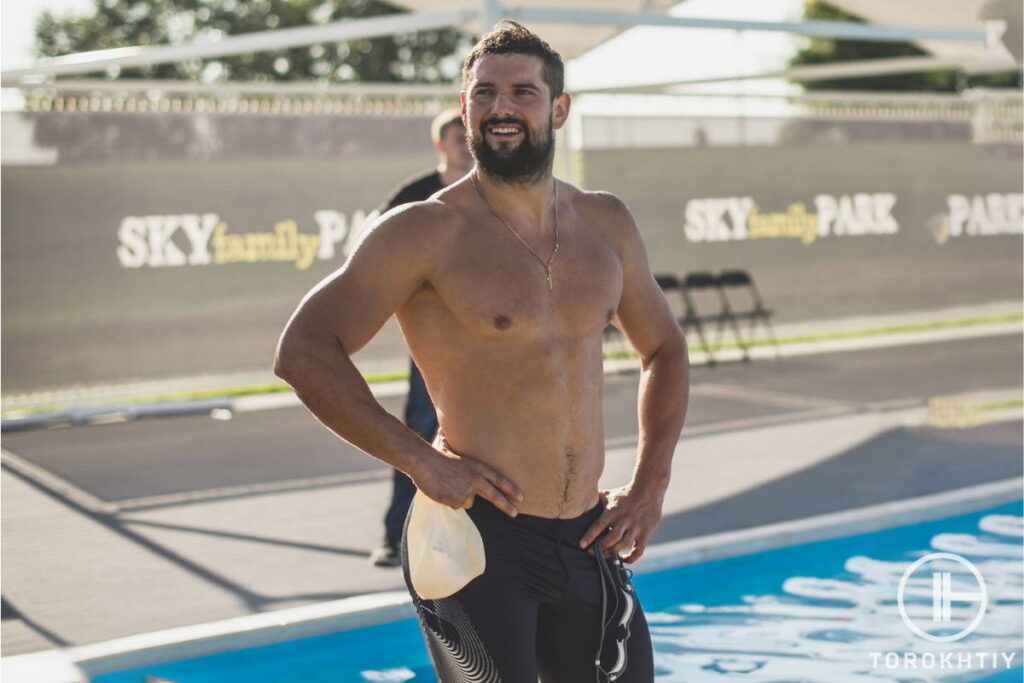
Triceps
The triceps are the muscles on the back of the upper arm. They are responsible for extending the arm and straightening the elbow. In swimming, the triceps are used during the recovery phase of the stroke. They help to push the arms forward and out of the water, preparing them for the next pull phase.
Abdominals
The abdominals, or abs, are the muscles in the stomach. They are responsible for stabilizing the core and supporting the spine. In swimming, the abs are used to maintain a stable body position in the water. They help to keep the body streamlined and reduce drag, allowing for a more efficient swim.
Lower Body
Glutes
The glutes, or buttocks, are the muscles in the hips. They are responsible for extending the hips and rotating the legs. In swimming, the glutes are used to generate power during the kick phase of the stroke. They help to propel the body forward through the water and maintain a streamlined body position.
Quadriceps
The quadriceps, or quads, are the muscles on the front of the thigh. They are responsible for extending the leg and straightening the knee. In swimming, the quads are used during the kick phase of the stroke. They help to generate power and lift the legs up and down in a rapid kicking motion.
The Benefits of Weight Training for Swimmers
Swimming is a fantastic form of cardiovascular exercise that works nearly every muscle in your body. However, there’s more to improving your swimming performance than just spending time in the water. A specific weight training program for swimmers is a crucial component of any successful training regimen, and it offers a multitude of benefits that can help swimmers of all levels reach their goals.
Below, we’ll explore the numerous benefits of swimmer strength training, and how incorporating this type of exercise can improve your performance both in and out of the water.

Increased Power and Speed
One of the most significant benefits of strength training for swimmers is increased power and speed in the water. By targeting specific muscle groups and movements that are crucial for swimming, strength training can help you generate more force with each stroke, leading to faster race times and improved overall performance.
Improved Technique
Another key benefit of strength training for swimmers is improved technique. By focusing on exercises that target the muscles used in swimming, strength training can help swimmers achieve better body positioning, stronger pulls, and more efficient strokes. This, in turn, can help reduce drag and increase the amount of time you spend moving forward in the water.
Reduced Risk of Injury
Swimming is a low-impact sport, which makes it an excellent option for individuals with joint pain or mobility issues. However, repetitive swimming motions can still lead to overuse injuries if not addressed properly. Strength training can help improve muscular imbalances, correct faulty movement patterns, and increase joint stability, ultimately reducing the risk of injury both in and out of the pool.
Improved Muscle Endurance
Swimming is a sport that requires a high level of muscular endurance, as swimmers must maintain proper form and technique throughout the duration of a race. Strength training can help improve muscular endurance by increasing the amount of time your muscles can work before reaching fatigue, ultimately allowing you to swim faster and for longer periods of time.
Increased Overall Fitness
While swimming is an excellent form of cardiovascular exercise, it primarily targets the muscles in your upper body. Strength training, on the other hand, can help you build strength and endurance in all major muscle groups, leading to overall improvements in fitness and athleticism.

Strength Training Exercises for Swimmers
Here are some of the best weight training exercises for swimmers.
Pull-Ups
Pull-ups are an effective exercise for strengthening the latissimus dorsi, which is a key muscle used in swimming. Pull-ups also work the biceps, forearms, and shoulders. Swimmers can benefit from doing pull-ups with a wide grip to mimic the wider arm position used during the pull phase of the stroke.
To Perform:
Hang from a pull-up bar with your hands slightly wider than shoulder-width apart. Engage your back muscles and pull your body up towards the bar until your chin is above the bar. Lower yourself back down to the starting position and repeat for several repetitions.
Lat Pulldowns
Lat pulldowns are a variation of pull-ups that can be done using a cable machine or resistance band. This exercise targets the latissimus dorsi, as well as the biceps and shoulders.
To Perform:
Sit at a lat pulldown machine and grasp the bar with a wide grip. Keep your back straight and engage your core muscles. Pull the bar down towards your chest, squeezing your shoulder blades together. Slowly release the bar back up to the starting position and repeat for several repetitions.
Dumbbell Rows
Dumbbell rows are an effective exercise for targeting the lats and upper back muscles. This exercise can be done with a dumbbell or kettlebell.
To Perform:
Place one knee and hand on a bench or chair, keeping your back straight. Hold a dumbbell in your free hand and keep your arm extended down towards the floor. Pull the dumbbell up towards your chest, squeezing your shoulder blades together. Lower the dumbbell back down to the starting position and repeat for several repetitions.
Bench Press
Bench press is a classic exercise for strengthening the chest, shoulders, and triceps. This exercise can help swimmers develop more power during the push phase of the stroke.
To Perform:
Lie on a flat bench and grasp the bar with a wide grip. Lower the bar down towards your chest, keeping your elbows tucked in towards your sides. Push the bar back up towards the starting position and repeat for several repetitions.
Push-Ups
Push-ups are a bodyweight exercise that targets the chest, shoulders, and triceps. This exercise can be done anywhere, making it a convenient option for swimmers who may not have access to a gym.
To Perform:
Start in a plank position with your hands shoulder-width apart. Lower your body down towards the floor, keeping your elbows tucked in towards your sides. Push your body back up to the starting position and repeat for several repetitions.
Squats
Squats are an effective exercise for targeting the glutes, quads, and hamstrings. This exercise can help swimmers develop more power during the kick phase of the stroke.
To Perform:
Stand with your feet shoulder-width apart and your toes pointing forward. Keep your chest up and your core engaged. Lower your body down towards the floor, keeping your knees in line with your toes. Push your body back up to the starting position and repeat for several repetitions.
Lunges
Lunges are another exercise that targets the glutes, quads, and hamstrings. This exercise can help swimmers develop more power during the kick phase of the stroke.
To Perform:
Stand with your feet hip-width apart and take a large step forward with one foot. Lower your body down towards the floor, keeping your front knee in line with your toes. Push your body back up to the starting position and repeat with the other leg.
Deadlifts
Deadlifts are a full-body exercise that targets the glutes, hamstrings, lower back, and core muscles. This exercise can help swimmers develop overall strength and power.
To Perform:
Stand with your feet shoulder-width apart and grasp a barbell with an overhand grip. Keep your chest up and your core engaged. Lift the barbell up towards your hips, squeezing your glutes and hamstrings. Lower the barbell back down to the starting position and repeat for several repetitions.
Planks
Planks are a core exercise that can help swimmers develop better body position and reduce drag in the water.
To Perform:
Start in a push-up position and lower your forearms to the floor. Keep your body in a straight line from your head to your heels. Hold the position for several seconds, focusing on engaging your core muscles. Release and repeat for several repetitions.
Russian Twists
Russian twists are a core exercise that targets the obliques, or side muscles of the abs. This exercise can help swimmers develop better rotation during the stroke.
To Perform:
Sit on the floor with your knees bent and your feet flat on the ground. Lean back slightly and lift your feet off the ground. Hold a weight or medicine ball in front of your chest. Twist your torso to the left, bringing the weight or ball towards the ground. Twist back to the center and then twist to the right. Repeat for several repetitions.
Key Factors of Weight Training for Swimmers
Now we’ve covered the key lifts for swimmers, in this section we will outline the key factors to help swimmers create an effective lifting program that complements their swim training and helps them achieve their goals in the pool. From specificity to recovery, we will explore the factors that swimmers should keep in mind when lifting weights.
Specificity
The first factor to consider when creating a strength training routine for swimmers is specificity. It’s important to target the specific muscle groups used in swimming, as well as the movement patterns involved in the sport. For example, exercises such as pull-ups, lat pulldowns, and dumbbell rows can be effective for targeting the lats and upper back muscles used during the pull phase of the stroke. Squats and lunges can be effective for targeting the glutes, quads, and hamstrings used during the kick phase of the stroke.
Progression
The second factor to consider when creating a strength training routine for swimmers is progression. As swimmers become stronger, it’s important to gradually increase the intensity and volume of their workouts to continue seeing progress. This can be achieved through increasing the weight, reps, or sets of exercises over time. Additionally, incorporating more advanced exercises or variations of exercises can help swimmers continue to challenge themselves and see progress.
Balance
The third factor to consider when creating a strength training routine for swimmers is balance. Swimmers should aim to target all major muscle groups used in the sport, including the chest, back, shoulders, arms, core, and lower body. Neglecting certain muscle groups can lead to imbalances and potential injury. Additionally, it’s important to incorporate exercises that work both the front and back of the body, as well as exercises that target both the upper and lower body.
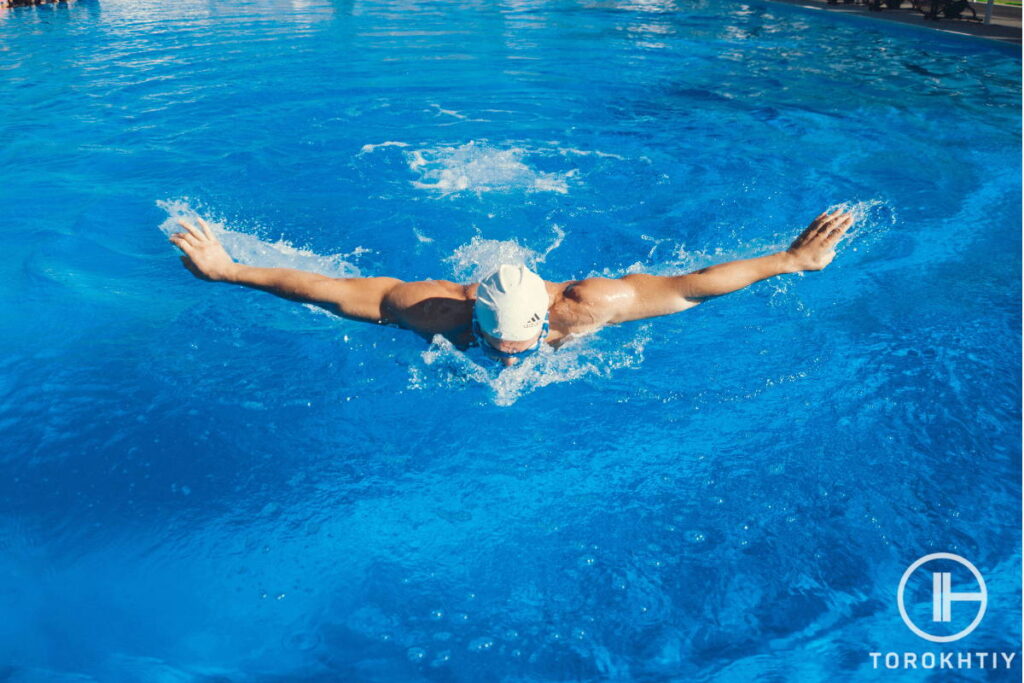
Recovery
The fourth factor to consider when creating a strength training routine for swimmers is recovery. Strength training can place stress on the muscles and joints, and it’s important to allow for adequate recovery time between workouts. This can be achieved through proper nutrition, hydration, and sleep, as well as incorporating rest days and active recovery activities such as stretching or foam rolling.
Integration with Swim Training
The fifth factor to consider when creating a strength training routine for swimmers is integration with swim training. Swimmers should aim to schedule their strength training workouts on days that complement their swim training schedule. For example, it may be beneficial to schedule strength training workouts on days that focus on specific strokes or distances, or on days that have lighter swim workouts. Additionally, incorporating exercises that mimic the movement patterns of swimming, such as resistance band swimming drills or cable machine swim strokes, can help swimmers improve their technique and power in the water.
Consistency
The sixth factor to consider when creating a strength training routine for swimmers is consistency. Consistency is key when it comes to seeing progress and achieving fitness goals. Swimmers should aim to incorporate strength training into their regular training routine on a consistent basis, whether it’s one to three times per week, depending on their individual needs and goals. Consistency can also help swimmers establish good habits and maintain motivation over time
Safety
The seventh factor to consider when creating a strength training routine for swimmers is safety. It’s important to use proper form and technique when performing exercises to prevent injury. Swimmers should also start with lighter weights and gradually increase the intensity over time. Additionally, it’s important to listen to the body and adjust the workout as needed, especially if there is any pain or discomfort.
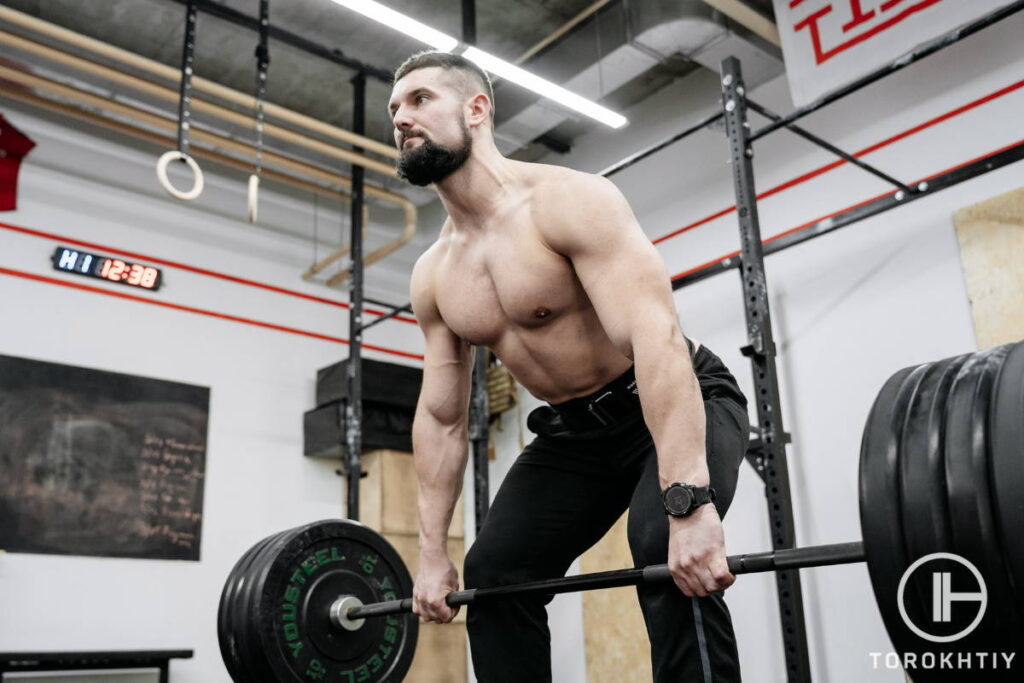
A Basic Training Program for Swimmers
Here’s a basic strength training program for swimmers that incorporates some of the key exercises mentioned in previous sections:
Day 1:
- Pull-ups – 3 sets of 10 reps
- Lat pulldowns – 3 sets of 12 reps
- Dumbbell rows – 3 sets of 12 reps
- Bench press – 3 sets of 10 reps
- Planks – 3 sets of 30-second holds
Day 2:
- Squats – 3 sets of 10 reps
- Lunges – 3 sets of 10 reps each leg
- Deadlifts – 3 sets of 10 reps
- Push-ups – 3 sets of 12 reps
- Russian twists – 3 sets of 12 reps each side
Perform each exercise with proper form and technique, and gradually increase the weight and intensity over time. Rest for 1-2 minutes between sets and exercises. It’s important to also incorporate rest days and allow for adequate recovery time between workouts. Additionally, this program can be adjusted and customized based on the individual swimmer’s needs and goals.
List of Equipment Needed
- Pull-up bar
- Lat pulldown machine or resistance band
- Dumbbells or kettlebells
- Barbell and weight plates
- Bench or stability ball
- Resistance band or cable machine for swimming drills
- Yoga mat or exercise mat for planks and Russian twists
Some of these items, such as a pull-up bar or resistance band, may be able to be used at home, while others, such as a barbell and bench, may require access to a gym or fitness center. It’s important to use equipment that is appropriate for the individual’s fitness level and to follow proper safety guidelines when using equipment.
FAQ
What Drills Are Best for Swimmers?
Upper body stretches are important because they help to improve flexibility, increase range of motion, reduce the risk of injury, improve posture, and alleviate tension and pain in the upper body. They also promote relaxation and reduce stress levels, leading to better mental and physical health. Incorporating upper body stretches into your daily routine can improve your quality of life, reduce pain and discomfort, and enhance your overall physical function.
Does Weight Lifting Help Swimmers?
Yes, weightlifting can be a valuable addition to a swimmer’s training regimen. By targeting specific muscle groups used in swimming, weightlifting can help swimmers develop more power, endurance, and overall performance in the water. It can also help prevent injury and improve overall fitness.
How Often Should a Swimmer Lift Weights?
The frequency of weightlifting for swimmers can vary depending on individual needs and goals. Generally, swimmers should aim to lift weights one to three times per week, with adequate rest and recovery time between workouts. It’s important to also integrate weightlifting with swim training and prioritize balance and safety.
Conclusion
Weightlifting can be a valuable component of a swimmer’s training regimen. By targeting specific muscle groups used in swimming, gradually increasing intensity and volume, and prioritizing balance, recovery, and safety, swimmers can improve their overall strength and endurance in the water. With a well-rounded approach to training, swimmers can achieve their goals and improve their performance in the pool.
We want to hear from you! If you’re a swimmer, share your thoughts on weightlifting and how it has impacted your swimming performance. Do you have any tips or advice for others looking to incorporate weightlifting into their training? What challenges have you faced and how have you overcome them? Let’s keep the conversation going in the comments below!
Also read:
Why Trust Us?
With over 20 years in Olympic Weightlifting, our team does its best to provide the audience with ultimate support and meet the needs and requirements of advanced athletes and professional lifters, as well as people who strive to open new opportunities and develop their physical capabilities with us.
By trusting the recommendations of our certified experts in coaching, nutrition, dietology, and sports training programming, as well as scientific consultants, and physiotherapists, we provide you with thorough, well-considered, and scientifically proven content. All the information given in the articles concerning workout programming, separate exercises, and athletic performance, in general, is based on verified data. We ensure that you can rely on our professionals’ pieces of advice and recommendations that can be treated as personalized ones which will benefit you and fully meet your needs.
The product testing process is described in more detail here
Author: Sergii Putsov
Head of Sport Science, PhD
Best Results: Snatch – 165 kg,
C&J – 200 kg
Sergii Putsov, Ph.D., is a former professional weightlifter and National team member, achieving multiple medals in the 94 kg weight category at national competitions. With a Master’s degree in “Olympic & Professional Sport Training” and a Sport Science Ph.D. from the International Olympic Academy, Greece, Sergii now leads as the Head of Sport Science. He specializes in designing training programs, writing insightful blog articles, providing live commentary at international weightlifting events, and conducting educational seminars worldwide alongside Olympic weightlifting expert Oleksiy Torokhtiy.
Reviewed by: Oleksiy Torokhtiy
Olympic Weightlifting Champion
Best Results: Snatch – 200 kg,
C&J – 240 kg
Oleksiy Torokhtiy is a professional athlete boasting 20 years of experience in Olympic weightlifting. With multiple European and World titles under his belt, he has showcased his prowess in two Olympic Games (Beijing 2008 and London 2012). Upon concluding his illustrious career, Oleksiy dedicated himself to coaching. By 2022, he had conducted over 200 weightlifting seminars worldwide. He is the visionary behind an international sportswear and accessories brand known for its motto, “Warm Body Cold Mind.” Additionally, he is an esteemed author and the creator of a series of training programs and eBooks.

